Q&A: Why Are My Welds Ugly?
Learning to weld takes patience and practice. That includes MIG and flux-cored (FCAW) welding. In the beginning, it’s not uncommon for new welders to struggle to make smooth, quality weld beads — or to be uncertain of how to troubleshoot problems.
Follow this Q&A to find out the causes of ugly welds and ways to avoid them.
Q: Why are my welds ropey?
A: Ropey welds — welds that are too convex and high— typically occur when welding with too high of wire feed speed and too low of voltage. This is particularly true in the flat and horizontal position. Increase the welding voltage and/or decrease wire feed speed to remedy the problem. In the vertical position, ropey welds are more common due to gravity. To fix this problem, you may try to use a slight weaving technique; however, be careful because this can make the weld more susceptible to slag entrapment when using the FCAW process.
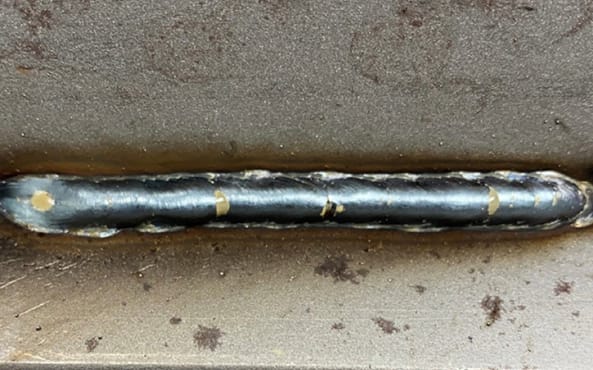
Q: What is causing excessive spatter on my welds?
A: Excessive weld spatter can result from voltage that’s too low or from welding on material that is dirty or has mill scale. Be sure to clean the base material and remove mill scale (or avoid it altogether when possible) and make certain that shielding gas flow is adequate. Increase your voltage or consider switching to a mixed gas if you are using 100% CO2.
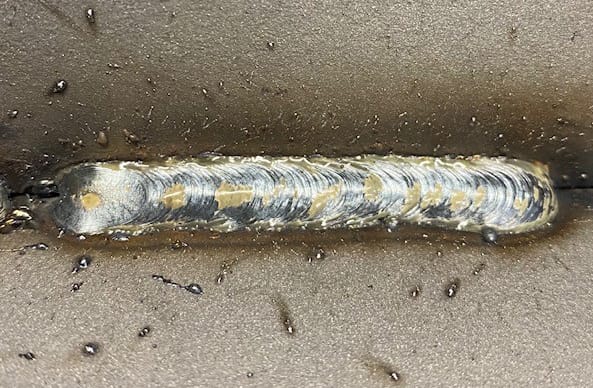
Q: Why do my welds have craters at the end of them?
A: Terminating the weld too early at the end of a pass causes craters. To prevent this issue, pause at the end of the weld for a brief moment while continuing to pull the trigger. Backstep slightly to fill in the crater.
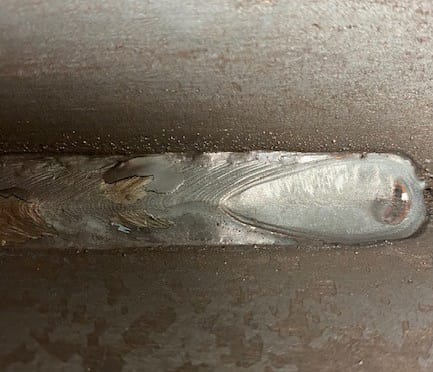
Q: Why do my welds have worm tracks?
A: Worm tracks can be a common issue in both gas-shielded and self-shielded FCAW processes, especially when welding in the flat position. They occur when gases fail to migrate fully out of the molten slag as the weld solidifies, resulting in a distinct mark on the weld surface. Excessive voltage is often the main culprit, so reducing voltage is the best remedy. Follow the filler metal manufacturer’s recommendation for the proper welding parameters for the diameter of wire being used. Moisture in the wire can also cause worm tracks, so be sure to store the filler metal in its original packaging in a dry, enclosed environment when not in use.
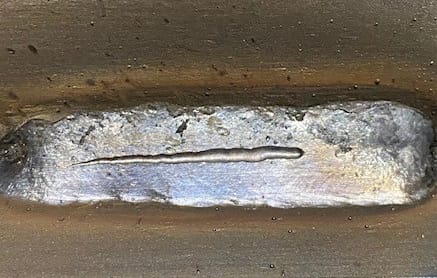
Q: What is causing porosity in my welds?
A: Porosity is common when MIG welding aluminum, but it can also occur with other processes and materials like carbon and mild steel. It results when the molten weld puddle is exposed to the atmosphere. There are several possible causes, including inadequate shielding gas coverage resulting from improper flow rate or from a draft blowing away the gas. Oil, moisture, grease and other contaminants on the base material can also contribute to welding porosity, as can excessive stickout (this prevents proper shielding gas coverage). Avoid porosity by ensuring proper shielding gas coverage, cleaning the base material and following the wire manufacturer’s recommended welding wire stickout.
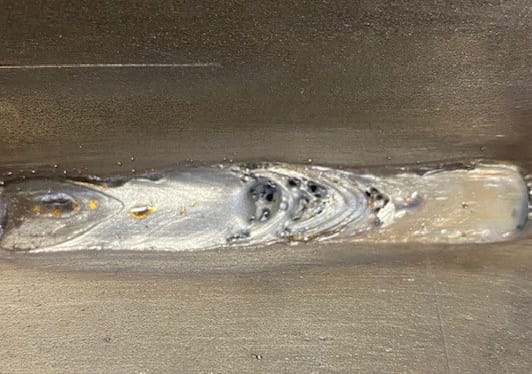
Q: Why does my weld have undercut?
A: Weld undercut occurs when a groove develops in the base material by the weld toe but isn’t filled. Common causes of weld undercut include excessive voltage with too fast of travel speeds and improper gun angle. When the voltage is too high, the arc tends to push the molten weld pool out of the joint. To prevent the problem, lower your voltage and reduce your travel speeds. Pay attention to the work angle of the gun, being sure not to focus it too much on either portion of the weld joint. Using a slight weaving technique can also help remedy undercut.

Q: Why is my weld cracking?
A: Highly restrained weld joints can lead to weld cracking, so it is best to avoid these designs when possible. Hydrogen can cause cold cracking, also referred to as hydrogen-induced or heat-affected zone (HAZ) cracking. Sources of hydrogen include moisture on the base or filler metal or the atmosphere (welding environments with excessive humidity can introduce hydrogen to the weld joint). Be sure you have a clean base material, store filler metals in a dry place and consider using low-hydrogen filler metals. These include welding wires with an H4 or H8 American Welding Society (AWS) designator; they have less than 4 or 8 mg of hydrogen per 100 g of weldment, respectively. Proper preheating is another option to reduce cracking. Preheating helps slow the cooling rate of the weld as it solidifies, which allows the hydrogen to diffuse from the weld pool more easily.
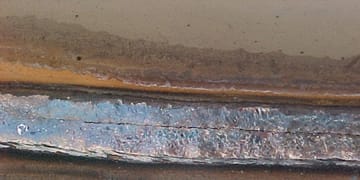
As with any aspect of the welding operation, reach out to a trusted welding distributor or filler metal or equipment manufacturer if you have questions or need assistance.



